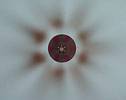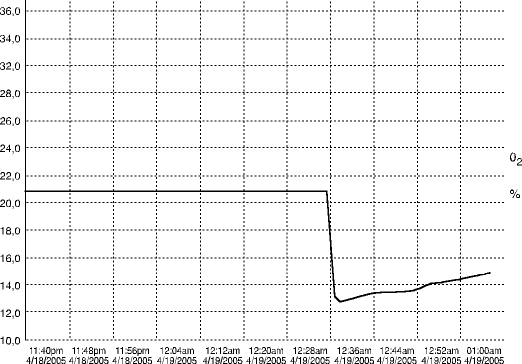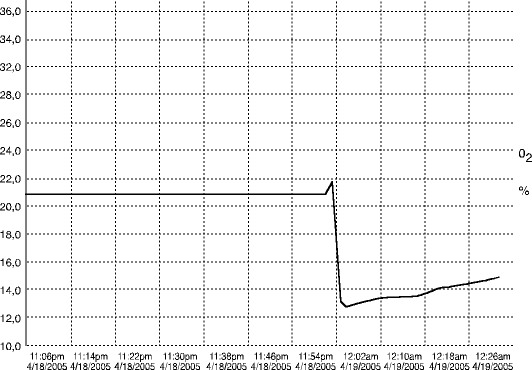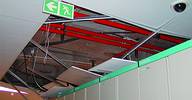

Vodacom Midrand has recently undergone a major revamp of its fire protection in the cellphone switching centre in the Vodaworld complex.
The need to efficiently protect a major switching centre of this nature against fire is paramount to Vodacom's planning.
This switching centre serves the whole of the Midrand area and handles thousands of calls an hour.
An unreliable and outdated installation was removed and replaced with the latest in technology fire detection and protection products.
Fire protection system
The project was engineered and managed by Chimera Fire Consultants.
Equipment, designs and hydraulic gas piping calculations were supplied by Red G Distributors. All installation work was conducted by Sensor Technologies.
This R1,2 million project was fast tracked and all participants had to perform at peak to achieve the difficult time scales set.
The high technology design comprises two Vesda smoke aspiration systems used to take samples of air passing the return air ducts in the floor void of the airconditioning units and providing early warning of smoke conditions.
This is supported by Apollo XP95 addressable smoke sensors in the floor void, the room and ceiling void configured for double knock operation.
With two detectors on two separate circuits triggering the gas is discharged into the room and voids after a 30-second delay period.
The 30-second delay is a standard requirement to ensure all occupants of the room evacuate timeously.
All detectors are wired to the Aritech FP2000 addressable fire panel for annunciation purposes.
On activation of a smoke sensor the airconditioning units are switched off to prevent circulation of the air.
All alarm conditions from the MSC room are wired to the control command centre of the Vodaworld complex.
Inergen gas was banked to provide protection of the MSC room, floor void and ceiling void, in platform, telkom room, power room and store.
52 cylinders in total were supplied by Red G distributors for this project.
Inergen gas is a world renowned, approved and proven gas extinguishant that is clean and safe for manned areas with high value equipment such as the one protected at Vodaworld.
Inergen in a mixture of argon, nitrogen and CO2 mixed in high pressure cylinders and discharged at 200 bar.
A pressure reducing orifice drops the discharge pressure to approx 60 bar in the down stream pipe work to the nozzles.
The objective of Inergen gas is to reduce the oxygen level in the room to a point where fires are extinguished but human beings can still breathe.
The normal oxygen level in atmosphere is 22%. Fires require oxygen to burn, if one can reduce this oxygen level to below 15% concentration fire cannot be sustained and will be extinguished.
Human beings require oxygen to breathe and can survive in an atmosphere with as little as 10% oxygen.
The operation of Inergen is to flood the room and reduce oxygen levels to approximately 12,5%. This ensures the majority of fires are extinguished but humans can still manage to breathe.
To ensure the Vodacom gas suppression system operated correctly the consultants insisted a room pressure test and a full gas dump test were performed.
Room pressure testing ensures that the room integrity is sufficient to restrict the loss of gas into the atmosphere.
Sensor Technologies conducted both room pressure testing and a full gas discharge test at Vodaworld.
Sensor Technologies management fully supported this requirement "because several previous discharge tests experienced by our company have failed", states owner Clive Foord.
There are numerous problems that can be encountered with gas suppression systems, such as:
Incorrect calculation of power requirements for gas cylinder actuators. There are cases of fuses blowing, power supplies folding and actuators failing to operate.
High pressure hoses have been found to leak or not withhold gas discharge pressures.
Any pipe fitting on a nozzle that is not correctly tightened can leak gas.
Pipe routes not installed in accordance with hydraulic design parameters can delay discharge times.
Design and installation of these high pressure systems is not only dangerous but can be complex and cannot be conducted by the 'inexperienced'.
A full functional test was carried out at the Vodaworld complex to ensure the high quality requirements demanded by the engineers was met.
The system passed with flying colours as can be seen by these graphs.


Oxygen levels were measured at three levels in the room. The detection system was operated and gas was discharged at 12:35 am with a current oxygen reading of 21%. Within one minute, as can be seen, the oxygen level dropped to approximately 12,8%.
The oxygen level gradually returned but was maintained at below 15% in excess of 30 minutes.
This exceeded all requirements of the standards and was proven as room occupants attempted in vain, to light matches and cigarette lighters after this half-hour period.
Note the photograph that shows part of the suspended ceiling was blown down during the test. This did not affect the effectiveness of the gas extinguishing tests and was proven to be a poorly installed ceiling grid.

It was learnt from this test that should this type of system be installed, ceiling structures should be checked.
For more information contact Keith Norgate, Sensor Technologies, 011 452 1339, [email protected]
| Tel: | +27 11 452 1339 |
| Email: | [email protected] |
| www: | www.sensorspecialrisk.co.za |
| Articles: | More information and articles about Sensor Special Risk Technologies |

© Technews Publishing (Pty) Ltd. | All Rights Reserved.